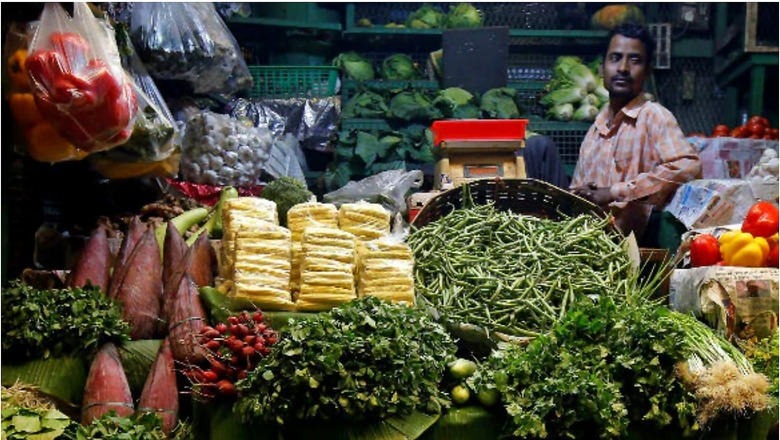
views
The retail inflation in April is likely to jump to 7.5 per cent due to high fuel and food prices, according to rating agency Crisil. A Reuters poll also expects the inflation in India to jump to 18-month high of 7.5 per cent on an annual basis in April. It means that the inflation rate will remain high above the RBI’s target limit for the fourth consecutive month.
The retail inflation in April is expected to rise to 7.5 per cent, Crisil Chief Economist D K Joshi said. Amid costlier fuel, input costs for companies are high in India that are forcing them to hike prices of products, thus pushing upwards the inflation.
In its off-cycle monetary policy statement, the RBI last week said that headline CPI inflation in March surged to 7 per cent from 6.1 per cent in February, largely reflecting the impact of geopolitical spillovers. Food inflation increased by 154 basis points to 7.5 per cent and core inflation rose by 54 bps to 6.4 per cent. “The rapid rise in inflation is occurring in an environment in which inflationary pressures are broadening across the world.”
According to a May 5-9 Reuters poll of 45 economists, inflation forecasts for April ranged between 7 per cent and 7.85 per cent.
The Reserve Bank of India (RBI) said, “Heightened uncertainty surrounds the inflation trajectory, which is heavily contingent upon the evolving geopolitical situation. Global commodity price dynamics are driving the path of food inflation in India, including prices of inflation-sensitive items that are impacted by global shortages due to output losses and export restrictions by key producing countries.”
It added that international crude oil prices remain high but volatile, posing considerable upside risks to the inflation trajectory through both direct and indirect effects. Core inflation is likely to remain elevated in the coming months, reflecting high domestic pump prices and pressures from prices of essential medicines.
“Renewed lockdowns and supply chain disruptions due to resurgence of COVID-19 infections in major economies could sustain higher logistics costs for longer. All these factors impart significant upside risks to the inflation trajectory set out in the April statement of the MPC (Monetary Policy Committee),” the central bank said.
According to a BQ Prime report, the average monthly prices of nine of the 22 food items that the Department of Consumer Affairs tracks on a daily basis rose to the highest on record in April.
The daily prices of 22 essential food items in April are up 0.85 per cent month-on-month on an average, and by 9.7 per cent year-on-year, according to the report.
Of the 22 items monitored on a daily basis by the Department of Consumer Affairs, more than half continued to see a sequential rise in prices. Tomatoes saw the sharpest rise in prices month-on-month, followed by edible oils, the report said.
The inflation in March jumped mainly due to a rise in food items. The inflation in the food basket during the month stood at 7.68 per cent, higher as compared with 5.85 per cent in February.
Core inflation, which excludes food and fuel components, also rose to a 10-month high of 6.29 per cent in March. Food inflation rose to 7.68 per cent in March, against 5.85 per cent in the preceding month. The spike in the food basket was due to a sharp rise in prices of oils and fats, which climbed 18.79 per cent year-on-year in March.
Read all the Latest Business News here


















Comments
0 comment